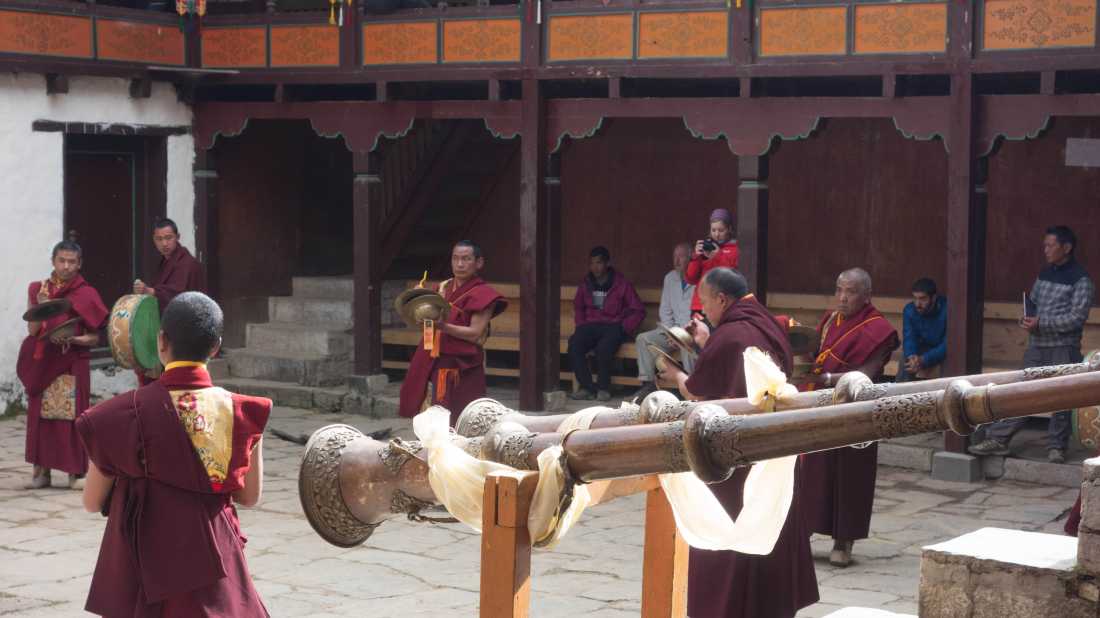School Programs in Nepal: How to Make the Most of Time in Kathmandu
Every World Expeditions Schools journey in Nepal begins and ends in Kathmandu. For teachers, this vibrant city is more than a gateway to the Himalaya. It is a living classroom where students can connect lessons from history, geography, and culture to real world experiences.
Whether you have a few spare hours or an extra day before or after your trek, Kathmandu provides teachers with countless ways to enrich a student program. Here are some of the best activities to add educational depth and personal meaning to your school Tour.
Kathmandu’s Cultural Sites for School Groups
The city’s UNESCO sites provide powerful opportunities for students to explore history and religion. At Boudhanath Stupa, students can witness Buddhist traditions in practice, circling the stupa with pilgrims and reflecting on ritual. The Swayambhunath “Monkey Temple” rises above the valley, combining Buddhist and Hindu iconography for comparative religious studies. Pashupatinath Temple, one of Hinduism’s most sacred sites, opens discussions about cultural practice and belief systems, even for visitors who cannot enter the main shrine.
Student Learning Outside the Kathmandu City Centre
A short trip beyond the city deepens student understanding of Nepal’s history and architecture. Bhaktapur is one of the best preserved medieval cities in the valley, perfect for sketching, field notes, or urban development comparisons. At Patan Museum, housed in a former palace, students can study Hindu and Buddhist art with clear interpretive displays that bring symbolism and history into focus.
Where Teachers Take Students to Recharge in Kathmandu
The Garden of Dreams is a restored heritage garden just minutes from Thamel, but it feels a world away from the busy streets. Teachers often use this space as a reflective session after trekking, encouraging students to journal, debrief, or simply rest. It also provides a case study in heritage restoration and urban planning.
Student Cycling and Hiking Options Near Kathmandu
Kathmandu Valley provides safe, guided activities for outdoor education beyond trekking. Cycling routes on the eastern side of the valley allow students to combine fitness with cultural observation. A day hike to Nagarjung Peak takes four hours and rewards the group with sweeping views of the Himalaya, making it an excellent exercise in teamwork, leadership, and resilience.
Teaching Global Trade and Culture in Thamel
Thamel is the shopping hub of Kathmandu and an energetic place for students to learn about commerce and cultural exchange. Teachers can design structured activities here, from identifying locally made handicrafts to discussing bargaining practices and global supply chains. It is also a lively environment for students to practise intercultural communication.
Wellbeing Activities for Students in Kathmandu
After long days of trekking, student wellbeing becomes a priority. Yoga and meditation classes give students tools for managing stress and reflection. You can turn an hour in the late afternoon into a calm reset that supports learning, teamwork, and a smooth transition back to city life. You can also visit a local monastery to experience quiet contemplation and mindful cultural practice.
Practical activities include:
- Guided breathwork and mindfulness Invite a qualified instructor for a simple sequence that focuses on slow breathing and present moment awareness. Keep language secular and inclusive.
- Gentle yoga and mobility Choose poses that release legs, hips, and shoulders after trekking. Offer chair based options so every student can participate comfortably.
- Mindful walk Use a quiet garden or courtyard. Ask students to notice five things they can see, four they can hear, three they can feel, two they can smell, and one they can taste such as mint tea.
- Reflection journaling Give short prompts. What challenged me today. Where did I show courage. Who supported me and how will I pay it forward.
- Gratitude circle Invite peer shout outs and thank you notes for local guides and crew. This strengthens group culture and intercultural respect.
- Sleep and recovery mini lesson Hydration, light stretching, warm layers for cooler evenings, quiet time, and device off time before bed.
- Creative debrief Sketch a moment from the day, map the route, or create a postcard to home that captures a lesson learned.

Teaching Humanitarian Service in Kathmandu
The Tilganga Eye Centre is supported by the Fred Hollows Foundation and provides a powerful example of global health initiatives in action. A guided visit can help students connect concepts of humanitarian service, medicine, and social impact with real world outcomes. This is an ideal extension for service learning or health related programs.
Why Teachers Add Nagarkot to Nepal School Programs
Nagarkot, a village set above terraced fields, is known for spectacular sunrise views of the Himalaya. Teachers often combine an overnight stay here with birdwatching at Phulchoki, creating links to science, geography, and environmental studies. It is a calm, reflective way to close a Nepal school program before returning to Kathmandu for departure.
Every World Expeditions Schools Nepal program begins and ends in Kathmandu. Adding a cultural or wellbeing component here ensures your students leave with not only the memory of a trek but also a broader understanding of Nepal’s people, history, and global connections.
See our Nepal School Programs | Talk to an Expert